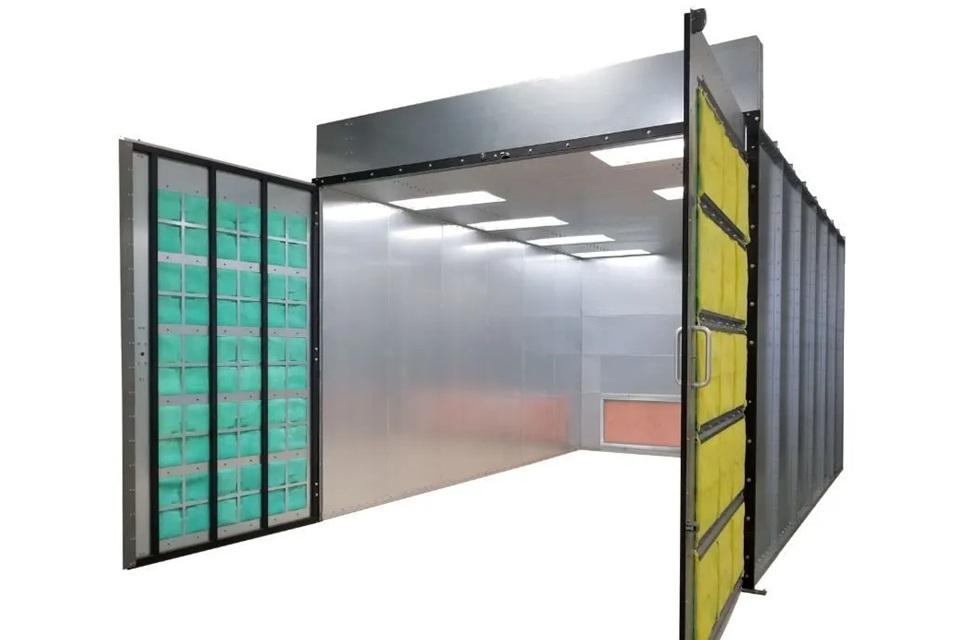Maintaining a sandblasting booth, commonly known as a blast booth, is crucial to ensure its longevity and optimal performance. Whether you rely on your blast booth for industrial applications or automotive refinishing, regular maintenance is key to keeping your equipment in top shape. In this guide, we’ll walk you through the essential maintenance tasks to keep your blast booth running smoothly and efficiently.
Daily Inspections & Cleanup
Performing daily inspections and cleanup routines is the foundation of blast booth maintenance. Start your day by inspecting the booth’s interior for any signs of wear and tear. Check for loose bolts, damaged hoses, or worn-out gaskets. Address any issues promptly to prevent them from escalating into costly repairs.
Cleanliness is paramount in blast booth maintenance. Remove dust, debris, and abrasive material from the booth’s interior. Pay special attention to corners and crevices where particles tend to accumulate. A clean blast booth not only ensures a safer working environment but also improves the quality of the blasting process.
Replacing Filters & Screens
Filters and screens play a vital role in maintaining air quality within your blast booth. Over time, these components can become clogged with contaminants, reducing the booth’s efficiency. Regularly inspect and replace filters and screens to ensure proper ventilation and dust control. This step is essential for the health and safety of your operators.
When replacing filters, make sure to choose the appropriate type for your specific blasting application. Different abrasive materials may require different filtration capabilities. Consult your manufacturer’s recommendations to make an informed choice.
Checking Abrasive Levels & Nozzle Wear
The abrasive material used in your blast booth is a consumable that requires monitoring. Check the abrasive level regularly to avoid interruptions during the blasting process. Additionally, inspect the nozzle for wear and tear. A worn nozzle can result in uneven blasting and increased abrasive consumption. Replacing nozzles when necessary ensures consistent and efficient blasting.
Testing Dust Collection System Efficiency
A well-functioning dust collection system is essential to maintain a clean and safe blast booth environment. Periodically test the efficiency of your dust collection system to ensure it captures and contains airborne contaminants effectively. Address any issues promptly to prevent the release of harmful particles into the air.
Monitoring Air Pressure & Air Leaks
Monitoring air pressure is critical for achieving precise blasting results. Check and adjust the air pressure as needed to match your blasting requirements. Additionally, inspect the booth for air leaks, as they can affect the overall performance of your equipment. Addressing air leaks promptly helps maintain consistent pressure and blasting efficiency.
Lubricating Moving Parts
Your blast booth consists of various moving parts, such as hinges, rollers, and conveyor systems. Regularly lubricate these components to prevent friction and wear. Proper lubrication ensures smooth operation and extends the lifespan of these critical parts.
Following Manufacturer’s Service Schedule
Lastly, but certainly not least, adhere to the manufacturer’s recommended service schedule. Manufacturers provide guidelines for maintenance and inspections specific to their equipment. Following these guidelines is crucial for ensuring the longevity and optimal performance of your blast booth.
In conclusion, blast booth maintenance is not just a routine task but a vital aspect of ensuring the reliability and efficiency of your equipment. By performing daily inspections, replacing filters, monitoring abrasive levels, testing dust collection systems, addressing air pressure issues, lubricating moving parts, and following the manufacturer’s service schedule, you can keep your sandblasting booth in top shape for years to come. Remember that proper maintenance not only saves you time and money but also contributes to a safer and healthier work environment.








No Comments